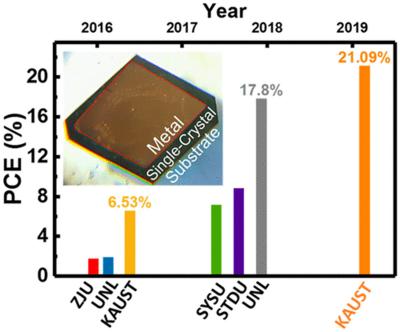KAUST researchers have developed a synthetic approach that generates homogeneous and defect-free crystals that have the potential to fast-track the commercialization of perovskite solar cells.

The performance and stability of solar cells depend on the morphology of the perovskite thin films, which act as light-harvesting layers in the devices. A major problem arises from the fact that existing perovskite solar cells usually consist of polycrystalline thin films that are highly disordered and defective, which prevents devices from achieving optimal performance.
Compared with their polycrystalline counterparts, single-crystal perovskites display substantially lower defect density and much higher charge-carrier diffusion lengths: this is a measure of their ability to maintain light-generated electrons separate from positively charged holes and create electrical current. Therefore, "We reasoned that these single crystals offer a chance for perovskite solar-cell technology to overcome these limitations and get as close as possible to the theoretical efficiency limit," Omar Mohammed, who co-led the study, says.
The crystals, which exhibited a thickness of 20 micrometers and an area of several square millimeters, provided high-quality solar cells with a maximum power-conversion efficiency of 21.09 percent. These devices set a new performance record for perovskite single-crystal solar cells.
"We were pleasantly surprised by these results," Osman Bakr, co-leader of this study, says. He adds that the researchers initially thought that they would need to grow crystals much thinner than 20 micrometers to achieve this performance, and growing thin crystals is extremely challenging.
The researchers believe that this record efficiency highlights the potential role of single crystals in the development of perovskite-containing devices in parallel with the path taken by their polycrystalline counterparts.

